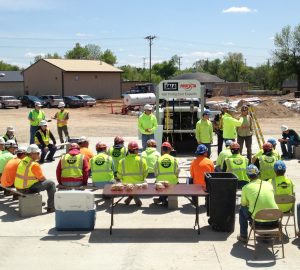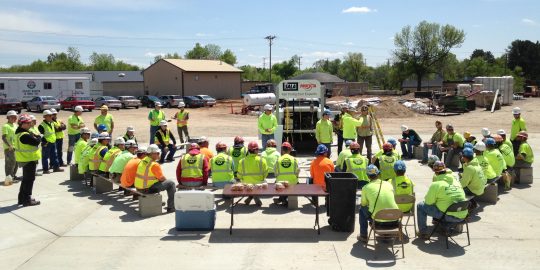
Employment in the construction industry is surging as pent-up demand means that more homes are being built at a brisk pace. But this new growth in housing has come at a price for those working in the industry: a significant jump in construction workplace deaths and injuries.
In 2022, 976 construction workers died on the job, according to OSHA. Also, injuries are surging as more contractors are forced to hire more inexperienced workers, who are more likely to be injured on the job. This means construction firms have to double down on safety, and that starts with sound tailgate meetings and buy-in from management.
You can use this handy list of meeting topics to plan your tailgate meeting agenda for the year. This list is by no means exhaustive, but it does cover the major areas that you should refresh your workers on annually.
Workplace hazards — Hazard recognition is a skill that all workers need to stay safe on the worksite. This training should cover common types of hazards found in the construction industry, how to assess their severity and the different control methods employed to prevent incidents from occurring.
Managing worksite conditions and equipment — The dangers vary at each worksite depending on the job as well as the weather. As a result, hazards associated with housekeeping, slips, trips, falls and materials need to be recognized. Training should include general tool safety guidelines including rotating machinery, air, electric and power tools.
Fall protection — Falls are a serious hazard in all construction. This training should focus on basic fall protection equipment used in construction, worker and employer responsibilities for working at heights, and common fall protection inspection points.
Ladder and scaffold safety — Some of the most common tools used on construction sites today include ladders and scaffolds, which pose their own fall hazards. They can also be major sources of injuries due to falls and improper use. Training should focus on the types of ladders and scaffolds that will be used in a job, correct set-up, usage and contraction, along with a description of scaffold tags.
Defensive driving — Whether your employees are driving to work, from work, or operating a piece of equipment on the worksite, it is important to practice safe, defensive driving techniques. Your training should focus on state driving laws, defensive driving techniques and typical causes of motor vehicle accidents.
Powered mobile equipment — Powered mobile equipment is used for many purposes in the construction industry. It is important to operate and work safely near this equipment. Training should cover all of the powered mobile equipment you’ll have on the job, how to conduct a pre-job walk around of a machine and how to work safely around the various pieces of equipment.
Personal protective equipment — Although it is your last line of defense in the prevention of injury, personal protective equipment (PPE) is a regular part of the clothing worn on most construction jobs. Training should focus on the role of PPE on the job, basic PPE found in the construction industry, and when specialized PPE is necessary.
Excavating and trenching — Any excavation has the potential to harm workers who are not properly informed of the risks associated with digging and how to prevent dangerous incidents. Training should explain hazards, different soil types and their properties, and important safety precautions that should be part of all digging operations.
Personal physical care and conduct — Working in the construction industry requires substantial physical health and stamina. In this module, ways to care for your body to prevent injuries and the impacts of drugs and alcohol on your ability to work safely should be examined, as well as professional behavior and conduct on the worksite.
Hazard communications — The construction industry uses various chemicals and materials that could be harmful to your health if not handled correctly. Training should focus on the Globally Harmonized System of hazardous materials labeling and the function of Material Safety Data Sheets, so that employees know how to protect themselves from dangerous hazardous materials.
Environmental safety — Protecting the environment is everyone’s responsibility. Training should introduce workers to the typical types of pollutants found in the construction industry, what to do in case of an accidental release of hazardous materials and general transportation of dangerous goods requirements.
Emergency response — When an accident does occur, your employees, supervisors and managers should know your emergency response plan. Training should cover key response plan elements, how to access first aid on the worksite, and basic fire-fighting techniques.


